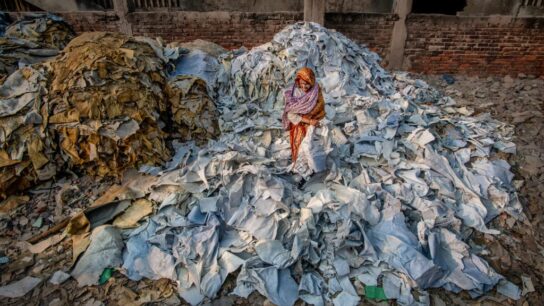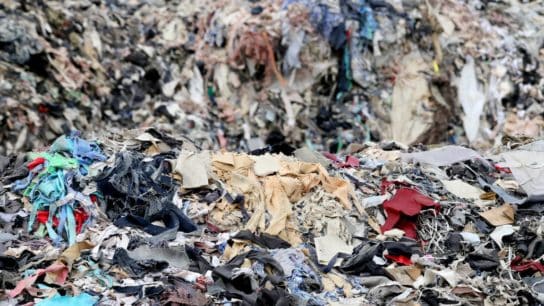In the centre of Kathmandu valley, the Bagmati River flows from the hills of Shivapuri, passing through the UNESCO World Heritage Site Pashupatinath Temple on its way to India’s holy river Ganga. For decades, the water of the Bagmati uplifted many livelihoods. However, with rapid urbanisation and industrialization, the once holy river is now the most polluted river of Nepal.
—
Understanding the Significance of the Bagmati River
The Bagmati River originates from the Bagdwar area in the Shivapuri Hills, located in the northwestern part of Kathmandu Valley, central Nepal, at an elevation of around 2,690 metres (8825 feet) above sea level.
The river is a complex system composed of seven tributaries (Bagmati, Bishnumati, Dhobikhola, Manohara, Nakkhu, Balkhu, and Tukucha) and five sub-tributaries (Godavari, Hanumante, Sangla, Mahadev, and Kodku Khola).
As the oldest river of Nepal, Bagmati is considered sacred by Hindus, and holds divine power, acting as the foundation of Kathmandu civilization. The river and its tributaries support around 3 million people in and around Kathmandu Valley, who use its waters for crop farming, fishing, laundry, household tasks, and bathing.
The Bagmati also flows through one of the most significant Hindu temples in the world, the Pashupatinath Temple, a UNESCO World Heritage Site. The river unites many ethnic groups and tourists under a common set of religious customs and plays a significant role in religious and cultural celebrations. Pashupati Aryaghat, a cremation place located on the riverbanks near the temple, is one of Nepal’s most famous open-air cremation sites.

Unfortunately, the river has reached alarming levels of pollution, posing significant threats to the environment, public health, and even cultural heritage. Over the years, industrial waste, untreated sewage, and rampant human activities have turned this once-pristine river into a symbol of environmental degradation.
Causes of River Pollution
Pollution in the Bagmati is an uphill battle for the sustainable development of the Kathmandu Valley.
1. Industrial and Domestic Discharge
Rapid industrialization along the riverbanks has led to the unregulated discharge of untreated hazardous chemicals, minerals, high quantities of oxygen-demanding wastes, and synthetic organic compounds. In the Kathmandu Valley, industrial wastewater accounts for 7% of the total wastewater, while domestic wastewater contributes the remaining 93%.
A 2011 report published by the High Powered Committee for Integrated Development of Bagmati Civilization (HPCIDBC) found that more than 90% of households in the Kathmandu Valley have access to toilet facilities; the concerning reality, however, is that the majority of wastewater is being discharged directly into the rivers due to the absence of suitable and sufficient treatment systems.
2. Untreated Sewage
The discharge of untreated domestic sewage from residential areas, slums, and urban settlements is a major contributor to river pollution. Over 95% of wastewater is estimated to have been released into the water bodies without treatment.
Estimates for 2020 and 2030 based on 2014 values revealed that the existing and rehabilitated wastewater treatment plants would still be insufficient to alleviate Bagmati pollution. The 2020 projection was already exceeded in values by 2019.
3. Solid Waste Mismanagement
Improper solid waste management practices, such as open dumping and littering, result in the accumulation of non-biodegradable materials along the riverbanks. Solid waste such as plastics, paper and paper products, textiles, rubbers and leathers, metals, glass, and organic waste pose a significant threat to aquatic life and the overall ecosystem of the river. Estimates suggest that over 60% of the solid trash in the Kathmandu valley is dumped on the road or nearby river banks, with almost 25% of the total reaching open waters. A 2015 research found that an average of about 70,000 plastic fragments (micro- and macro-) travel through Kathmandu Valley along the Bagmati river each day.
4. Religious Practices
As mentioned previously, the Bagmati holds immense religious significance, attracting pilgrims who perform rituals and ceremonies. Hindus in Kathmandu regularly gather around the river to pray at shrines and celebrate holidays and festivals. For example, during the Rishi Panchami holiday, women enter the river to wash away their sins, while during the Bala Chaturdashi festival, hundreds hold ceremonies for the salvation journey of the deceased members of family and society.

With an average of 37 cremations per day, the Pashupatinath Temple is the largest cremation site in Nepal. The bodies are burnt along the banks of the river while the remaining ashes are thrown into the water. The improper disposal of religious offerings, such as flowers, garlands, and other items only adds to the pollution burden.
Consequences
The Kathmandu Valley has become densely populated over the last few decades due to rapid urbanisation, with an annual population growth rate of 5.2%. Unfortunately, the worsening water conditions and the continued discharge of untreated industrial and domestic waste into the river are hindering the sustainable development of Kathmandu and other urban areas in the valley, degrading the region’s environment.
River pollution is also linked to adverse health issues, particularly arising from the consumption of contaminated water. According to the World Health Organization (WHO), around one million people die each year globally from preventable conditions such as diarrhoea as a result of unsafe drinking-water, poor sanitation and hand hygiene. In Nepal, the mortality rate due to unclean water, poor sanitation and hygiene is 17.8 per 100,000 people. Even though 2.7% of the Earth’s freshwater is found in Nepal, its most developed part, Kathmandu, faces acute water scarcity.
To tackle the problem, the Nepali government has taken several initiatives to establish drinking water arrangements, such as the Pani Goswara water supply system in May 1973, which was handed over to the Nepal Water Supply Corporation in 2013. In 2008, the Kathmandu Valley Water Supply Management Board (KVWSMB) granted Kathmandu Upatyaka Khanepani Limited (KUKL) a 30-year licence to provide water supply and sanitation services. Through the Melamchi Water Supply Project, approved by the Asian Development Bank in 2000, the 1.5 million residents (180,000 households) of the Kathmandu Valley long-awaited improvement of water supply services were carried out, leading to better water quality, increased quantity, improved supply, extended service areas, more equitable water distribution, and better customer services.
Despite all this, water shortages in the Kathmandu Valley still persist today due to overuse of groundwater reserves and river pollution. On top of this, traditional water sources have also dried up for a variety of reasons, including overpumping of groundwater, shrinking open spaces, prolonged drought conditions, black-topping, and concretization of roads and open spaces around homes, leaving only a few functional taps and thus forcing people to either queue for water or purchase it from private sources such as water tankers.
One-quarter of the drinking water samples collected by the government’s Epidemiology and Disease Control Division in Kathmandu in 2023 tested positive for faecal coliform. The test was carried out on jar water, tap water supplied by the state, tanker water, tube well water, water from wells, and water from the Melamchi river, proving that most water sources in the region are contaminated.
Towards a Solution?
There have been growing efforts for river pollution management over the years. Five Wastewater Treatment Plants (WWTP) were constructed in the 1980s to mitigate pollution in the water and improve health and sanitation problems in the Kathmandu Valley. The Kathmandu Valley Wastewater Management Project (KVWMP), launched in 2013 with the support of the Asian Development Bank (ADB), has contributed to expanding and rehabilitating these wastewater treatment plants. Since the 1990s, Nepal has also started introducing constructed wetlands (CWs) to treat wastewater using wetland plants, soils, and related microorganisms.
In 2011, with the support of the ADB, the Nepali government proposed the Bagmati River Basin Improvement Project (BRBIP) to increase flow augmentation in the Bagmati river during the dry season and wash away wastewater discharges. This included the expansion of the Dhap Dam to store monsoon rainfall and release it downstream during the non-monsoon season, which officially began operating in 2023. As part of the project, construction works for a new dam, the Nagmati Dam, have also begun. Expected to be completed by 2032, the reservoir will store 9.4 billion litres of monsoon runoff and will be releasing 450 l/s into the Bagmati River.
Nevertheless, critics of the project pointed out that more than 80,000 trees will be cut down to make space for the Nagmati Dam, with severe repercussions on ecosystems of the area. According to a 2022 study on Groundwater for Sustainable Development, construction of these dams will disrupt the natural flow and impact the ecosystem’s biological and chemical properties. Moreover, some argue that the project will not lead to the hoped-for results. In an editorial for the Nepali Times, Ramesh Kumar wrote, “When released in the dry season, the stored water is supposed to wash away the waste, flush the stench of sewage, and raise the level of the aquifer. However, no amount of water released into the Bagmati will clean it as long as it continues to be a sewage canal and a dumping ground for solid waste.”
In the past years, local governments, environmental NGOs and various international organisations also promoted an array of cleanup campaigns and projects. One such example is the Bagmati River Clean-up Mega Campaign (2013), which successfully removed over 20,000 metric tonnes of waste by its eleventh year.

Despite these mega projects to revive the river, water quality remains a health hazard for nearby communities.
Findings published in the Journal of Nepal Health Research Council (2023) found 615 coliform bacteria at 26 out 66 sites along the Bagmati River, with 241 highly resistant to penicillin, erythromycin, and tetracycline antibiotics. Similarly, bacteriological analysis published in 2023 by another group of researchers also reveals that the Bagmati River is highly contaminated with different microorganisms, with nearly 80% found to be resistant to multiple classes of antibiotics. The presence of antibiotic-resistant bacteria suggests the ongoing practice of raw sewage discharge, open defecation, and solid waste dumping along the river banks.
In 2024, Madhukar Upadhya, a senior watershed expert, said it is uncertain if it is possible to restore the Bagmati river without a holistic approach. Upadhya argued that constructing structures without proper studies of their risks is not cost-effective and only involving local communities in these projects will lead to better results.
You might also like: Pakistan’s Ravi is Most Polluted River in the World from Pharmaceutical Pollution
Final Thoughts
Like the Ganga in India, Nepal’s Bagmati River is a sacred body of water with cultural and spiritual importance. Given that adjacent nations such as India and Pakistan have some of the most poisonous rivers in South Asia, a collaborative research and development team could be a viable, cost-effective, and efficient option. If these issues remain unaddressed, river pollution will continue to harm natural biodiversity, people’s health, and slow down sustainable development in the region. Urgent and coordinated efforts are needed to mitigate pollution sources, improve waste management practices, and raise public awareness.
Featured image: Wikimedia Commons
This story is funded by readers like you
Our non-profit newsroom provides climate coverage free of charge and advertising. Your one-off or monthly donations play a crucial role in supporting our operations, expanding our reach, and maintaining our editorial independence.
About EO | Mission Statement | Impact & Reach | Write for us














